Budapest, 28 September 2022. Photo by Attila Kisbenedek/AFP
Europe finds itself at a crossroads between liberal policies and restrictive laws on abortion. As pro-life movements seek to gain traction in many places across the globe, abortion rights campaigners are seeking an EU-wide guarantee to safe abortion access. From Hungary to Italy, France, Switzerland and beyond, this article looks at abortion rights from a European perspective.
“I wouldn’t have handled another pregnancy, mentally or physically. But the procedure was horrible,” recalls Hanna (not her real name), a 32-year-old Hungarian psychology graduate. When she decided to get an abortion in Budapest, in the summer of 2023, this mother of two had to attend two medical appointments designed to convince her to bring the pregnancy to term. Eventually, she managed to secure a surgical abortion just five days before the 12-week legal limit. Throughout the process, she had to listen to the heartbeat of the fetus twice and received a paper with its vital information and age, which added guilt to an already difficult decision.
Jennifer, 28, from Győr in northwestern Hungary, opted for a medical abortion across the border, in Austria, at a cost of €500. She recalls the Austrian clinic as “full of patients, mostly from Hungary and Slovakia – a conveyor belt, but in a good way”. After a consultation, she was given her first dose of medication and advised to drive home safely. “In Austria, there were no questions, no watching videos of babies, no listening to heart beats. No one questioned my decision or made me feel ashamed,” she says. “If you can afford it, I’d recommend going abroad for better care. The process was emotionally taxing, but it was a relief to be treated with respect and dignity. It made all the difference.”
These stories underscore the divide within Europe on reproductive rights. While some countries pursue progressive legislation, others enforce some of the strictest conservative policies worldwide.
Similarly, Slovenia provides a compelling example of free access to abortion. Though the right to abortion isn’t explicitly mentioned in its constitution, its Article 55 has enshrined freedom of choice in childbearing since Slovenia’s independence in 1991. Nowadays, the country boasts one of the lowest adolescent abortion rates in Europe. “Slovenia’s example shows how normalising abortion access and integrating comprehensive education leads to better outcomes,” says Slovenian activist Nika Kovač, coordinator of the European ‘My Voice, My Choice’ campaign. “When abortion is legalised and accessible, the rates of abortions statistically decline because of better reproductive education,” Kovač explains.
In stark contrast, Malta entirely banned abortion until 2023, even when a woman’s life was at risk. A recent legal change has kept it highly restrictive, still excluding factors such as rape or fetal abnormality. Malta is one of five exceptions in Europe, as well as Andorra, Liechtenstein, Monaco and Poland “where abortion is basically not available”. In other countries, women have to travel in-country to find an abortion. Overall, 20 million women do not have access to safe and accessible abortion in Europe. The article continues with a summary of the situation across Europe.
SOURCE: A European Perspective: an editorial collaboration connecting European Public Service Media. Swissinfo.ch, by Martin Sterba (CT), Catherine Tonero and Garry Wantiez (RTBF), Rachel Barbara Häubi (SWI swissinfo.ch/RTS), Veronica DeVore (SWI swissinfo.ch), Sara Badilini (EBU), Alexiane Lerouge (EBU) and Lili Rutai (EBU), 21 January 2025.



